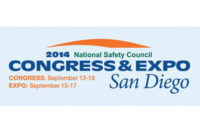It’s silvery-white and globby and you really want to touch it, make it move around and show it to your friends. That thinking on the part of some kids is a big reason behind the many mercury spill clean-ups the EPA conducts in schools each year, at costs ranging from $100,000 to over $1 million.
Mercury -- a liquid metal - is used in some thermometers, thermostats, electrical switches. It can also be found in many school science labs, which is something the Agency for Toxic Substances and Disease Registry (ATSDR) wants to change.
Breathing mercury vapors can affect the nervous system, damage the kidneys, and harm other parts of the body.
Schools are the most common location for mercury spills. Mercury is present in many common schools items and science labs. Spilled mercury may cause serious health problems, is expensive to clean, requires throwing away contaminated items, and can disrupt classroom activities and schedules, sometimes requiring months of school closures.
Help Via Video
To respond to this threat, ATSDR has produced two teacher training and spill clean-up training videos. Available in both English and Spanish, the videos educate teachers, school administrators, and staff about the danger of mercury, methods for responding to a spill, and ways to make schools mercury free.
The Mercury: Danger in Your School video explains the following:
- Where you might find mercury and what are its chemical characteristics.
- How spilled mercury turns to a vapor that can cause serious health effects if breathed in.
- What health/financial/other consequences can happen after a mercury spill.
- Why teachers, administrators, and staff must have a mercury spill response plan in place.
The video shows a mercury spill response so viewers can see how to determine the size of the spill, know whom to work with when an outside cleanup group is needed, and understand what information to communicate to students and parents about the spill. Finally, the video discusses the importance of developing a mercury-free school policy, including tips on taking an audit of mercury containing items and choosing mercury-free alternatives.
The second video, Mercury Spill Cleanup, explains how to perform these tasks:
- Take an inventory of your mercury products.
- Prepare for a spill by making a spill clean-up kit.
- Respond to a mercury spill, including determining the size of the spill.
- Clean up a small spill.
- Contact and work with outside professionals in the event of a large mercury spill.
Like the Mercury: Danger in Your School video, this video also provides a mercury overview and information on mercury health effects and consequences. In addition, it educates teachers and school staff, especially custodial and maintenance professionals, about the proper clean-up of a mercury spill. It shows step-by-step instructions for a small spill clean-up.
What Is Mercury?
The ATSDR Don'tMessWithMercury website provides educational materials and tools for students, teachers, and school administrators in English and Spanish to help prevent mercury exposure incidents.


